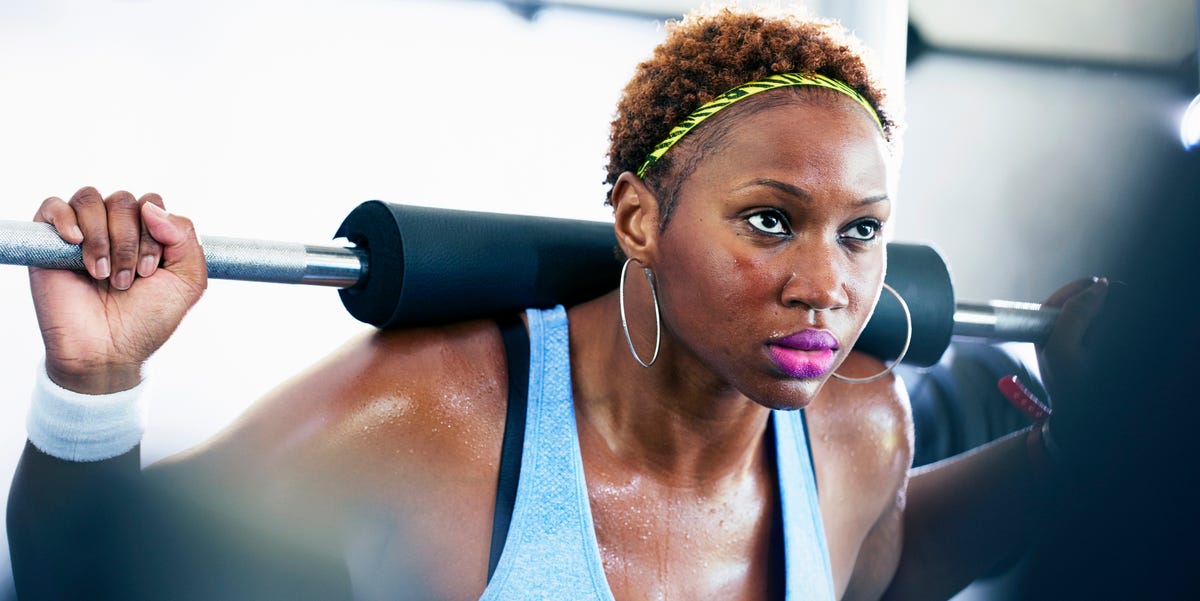Look, if you’re at all curious about weight lifting and strength training exercises, you’ve probably heard the word “reps” at some point. You may have even used the abbreviation yourself but still not know what reps are exactly.
Reps is short for the word “repetitions,” meaning the number of times you carry out an action. “When reading your workout, reps are how many times you will do the listed exercise,” says Ashley Rios, CPT, CEO of Fitness by Ashley. There’s a lot more to using reps properly in the context of an exercise program, though.
Meet the experts: Ashley Rios, CPT, is the CEO of Fitness by Ashley in New York. Jacqueline Kasen, CPT, is a Miami-based coach, master trainer, and senior director of group fitness at Anatomy.
For example, if a workout plan says to complete three by 10 reps (sometimes written as 3 x 10), you perform the movement ten times, then rest, Rios explains. You’ll repeat that pattern again twice more until you’ve completed three rounds, AKA, sets. Are you following? Great. Overall: “The purpose of reps and sets is to guide and create consistency in your training,” says Jacqueline Kasen, CPT, senior director of group fitness at Anatomy.
If that piqued your interest in reps, sets, and how to implement them into your routine as a beginner, read on for everything you need to know, according to expert trainers.
What’s a rep and what’s a set?
As mentioned, a rep is just the shortened version of the word repetition. “Reps refer to the number of times you perform a certain exercise or movement within a workout set,” Kasen explains. The number of repetitions serves as a guideline for how many times you should perform the exercise, creating structure in your training, Kasen says. Sets, on the other hand, refer to a grouping of exercises.
“Coaches follow a structured approach when organizing a workout that includes reps and sets,” Kasen says. For example, a fitness coach might assess your health history, exercise equipment preferences, endurance, strength, mobility, limitations, and more. Then, they use that intel to determine the sets and reps that are best for you.
And note this: Most workouts will use the reps and sets format to explain the routine. Think: weightlifting, strength training, circuit training, bodyweight exercises, HIIT workouts, and more, Kasen says. However, there are a couple instances when reps don’t apply: If you’re performing a workout for time or you’re taking an exercise class where you follow an instructor, you won’t need to think about reps much, Rios notes.
Why should I use reps and sets?
In addition to bringing order to your workout, there are a bunch of benefits that come with using reps and sets during your sweats.
- Tracking your progress: “By using sets and reps, it gives you data so you can track your progress over a period of time,” Kasen says. By observing how difficult or easy a set of reps and sets become as time passes, you learn where you’re currently at and how your fitness transforms on your way to hitting your goals, she notes.
- Efficient workouts: Reps and sets provide a simple format for your regular exercises, and they also “allow for time management and structure so you can be more efficient with your workouts,” Kasen says. AKA, no more walking around the gym contemplating what to do next—reps and sets make things simple and straightforward.
- Trying progressive overloads: Sets and reps provide a framework for progressive overload, which means gradually increasing the difficulty of workouts over time—a practice that’s essential for muscle growth, increasing strength, and providing clear targets for goal setting, Kasen says.
How many reps should I do?
The exact answer varies because the number of reps you should do is determined by your fitness goals, training experience, exercise type, and your overall personal preference, explains Kasen. It’s important to note that when you lift heavier, the reps will likely be lower. And when you lift lighter weights? Yep, the reps will be higher since you’ll need to lift for longer to feel your muscles working and bump up your muscular endurance.
- For strength: 1 to 6 reps of heavy weight
- For power: 1 to 3 reps using a heavier weight
- For endurance: 12 to 20 reps of moderate weight
How To Get Started With Reps And Sets
It might feel a little overwhelming to implement reps and sets on your own. (You’ve got this, trust!) To get started, think about your health and exercise goals, Kasen says. For example: Do you want to build strength, muscle, power, endurance, or something different? Once you determine this, you can pick a workout program that will help you reach those goals.
If your MO is general health and wellness, Kasen suggests starting with this simple plan:
- Week one: 12 to 15 reps
- Week two: 10 to 12 reps
- Week three: 8 to 10 reps
- Week four: lighten your loads and focus on recovery
Finally, if you’re just starting out with a fitness routine, “it’s best to work out with someone who is more advanced than you, ideally a personal trainer,” Rios says. At the very least, head to the gym with someone who can spot you as you lift. (Like your workout buddy!)
Madeline Howard is a writer, editor, and creative based in Brooklyn. Her work has been published in Esquire, Nylon, Cosmopolitan, and other publications. Amongst other things, she was formerly an editor at Women’s Health. Subscribe to her newsletter ‘hey howie’ at madelinehoward.substack.com.
Read the full article here




